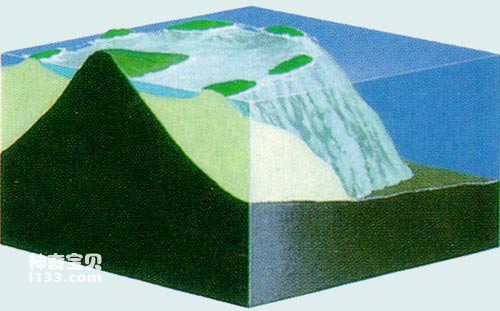There are a group of beautiful islands in the mainland of the motherland and south of Hainan Island, scattered like jade beads in the South China Sea. Their names have been called Dongsha Islands, Xisha Islands, Zhongsha Islands and Nansha Islands by the Chinese for thousands of years. Islands, they are an integral part of the motherland. But do you know how these islands were formed? What's interesting is that they were actually created by the accumulation of many tiny, primitive marine organisms over a long period of geological history. Geologists have proven through inspection and research that these islands are composed of reefs of special origin, and the organisms that create these reefs are corals.

coral
Coral is a type of primitive invertebrates living in the ocean, including modern sea anemones, stony corals, red corals, and extinct radial corals, transverse corals, etc. The entire coral family forms a class in the phylum Coelenterata, called Coralida, which is divided into four subclasses: Translate Coral, Tetracoral, Hexacoral and Octocora. Among them, transverse corals are the oldest, and most of them lived from the late Cambrian to the Triassic. Only a small group of them called echinophores lasted until the Tertiary Period before becoming extinct; the radiant corals lived for a relatively short time. , only distributed from the middle Ordovician to the Permian; while the six-shot coral and the eight-shot coral have survived since the Triassic and have survived until modern times. However, some scientists have reported that the emergence of octagonal corals can be traced back as far as the Devonian or even the end of the Precambrian.

sea anemone

Horizontal coral
According to ecological characteristics, corals can be divided into two categories: reef-building corals and non-reef-building corals. They have different requirements for living conditions such as seabed depth, temperature, seawater salinity, illumination, seawater circulation conditions, and seabed substrate materials. Based on research on modern corals, scientists have learned that reef-building corals generally live within a water depth of 50 meters, no more than 100 meters deep. The water temperature needs to be about 20 degrees Celsius, the light needs to be strong, and the seawater circulation and salinity need to be All are normal. Therefore, reef-building corals can only be distributed near the equator, that is, in the tropical and subtropical shallow sea areas between 28 degrees south latitude and 28 degrees north latitude.
After the reef-building coral dies, its skeleton can form a hard biological rock mass. The new reef-building corals that subsequently lived continued to live and die on such rock masses, leaving new biological rock masses stacked on top of the old biological rock masses. Over time, the biorock eventually accumulated into coral reefs. Modern coral reefs can be divided into fringing reefs, barrier reefs and atolls according to their geographical location. Fringing reefs are coral reefs that grow close to the coast; barrier reefs are some distance away from the coast; and atolls are usually round or horseshoe-shaped with a shallow lagoon in the center. These three main reef types actually represent successive stages of coral growth around sunken volcanic islands.

fringing reef

barrier reef

atoll
Paleontologists have discovered that coral reefs in the Paleozoic and Mesozoic eras were also quite developed, and through research on the distribution patterns of these ancient coral reefs, they found that the earth’s equator has been constantly changing over the long geological era, and its position has changed over time. Moves southward regularly.
Non-reef-building corals have a wide range of adaptability and generally live in seawater with a temperature of 4.5 degrees Celsius to 10 degrees Celsius. Some species can even live in seawater with a temperature of minus 1.1 degrees Celsius. They are distributed in shallow seas and deep seas, and some can even live at a depth of 6,000 meters.

The tropical island country Maldives is entirely composed of coral reef islands
Some scientists believe that the growth pattern of the growth lines on the outer surface of the coral wall is related to seasonal temperature changes and periodic changes in nutrient supply, and thus link this growth line to the concept of time. The growth line of modern corals grows once every day and night, and every 28 growth lines form a growth zone, which is equivalent to a lunar month (28 days) cycle. By observing and calculating the growth lines of radiant coral fossils in various geological periods, paleontologists have deduced time figures that are basically consistent with calculations using astronomical methods. The radiant corals of the Devonian had about 400 growth lines per year, while the number of growth lines in the Carboniferous was 385 to 390. This shows that the number of days in a year has gradually decreased from ancient times to the present in geological time, while the number of hours in a day has increased. gradually increase. This result proves that the speed of the earth's rotation is slowing down regularly! A small coral can actually be used as a clock to record time in geological history!
We created this article in conjunction with AI technology, then made sure it was fact-checked and edited by a Animals Top editor.